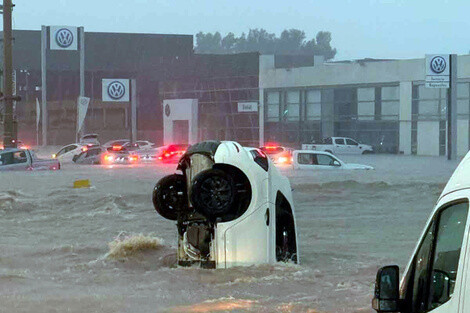
A recent tragedy in Bahía Blanca has raised concerns about the vulnerability of Buenos Aires and its suburban areas to climate change. Causes such as the increase in heavy rainfall and the rising level of the Río de la Plata have been identified, factors clearly linked to the current climate crisis. Despite the hydraulic infrastructure works carried out in the city, experts warn that they may be insufficient in light of the expected increase in precipitation.
Inés Camilloni, a prominent meteorologist and vice president of Working Group I of the Intergovernmental Panel on Climate Change (IPCC), has pointed out that climate change is intensifying phenomena that cause flooding. Events such as the recent floods in Concordia, Entre Ríos, show the increasing recurrence of extreme climatic phenomena, although it cannot be stated that Buenos Aires will face crises similar to those in Bahía Blanca.
The City government has implemented a Climate Action Plan 2050 (PAC) that includes hydraulic works to mitigate the risk of flooding. However, the lack of adequate measures in many areas of the suburbs exacerbates the situation, especially considering the upward trend in greenhouse gas emissions and the consequent increase in global temperatures.
Urban ecology specialist Ana Carolina Herrero emphasizes the need to develop green and blue infrastructure to complement traditional hydraulic solutions. She highlights the importance of creating green spaces and artificial ponds that can absorb and redistribute water in a scenario where rainfall in downtown Buenos Aires is increasing at a faster rate than in surrounding areas. The urgency for a comprehensive and rapid response to protect the communities of Buenos Aires and its surroundings from future climate disasters is evident, given the growing vulnerability of the Buenos Aires metropolitan area to ongoing climate changes.














